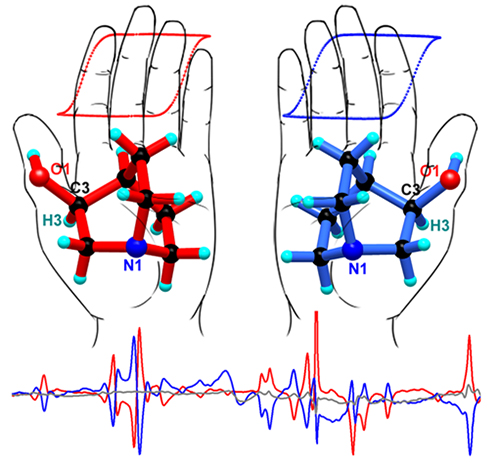For nearly 100 years, homochiral ferroelectrics were basically multicomponent simple organic amine salts and metal coordination compounds. Single-component homochiral organic ferroelectric crystals with high-Curie temperature (Tc) phase transition were very rarely reported, although the first ferroelectric Rochelle salt discovered in 1920 is a homochiral metal coordination compound. Here, we report a pair of single-component organic enantiomorphic ferroelectrics, (R)-3-quinuclidinol and (S)-3-quinuclidinol, as well as the racemic mixture (Rac)-3-quinuclidinol. The homochiral (R)- and (S)-3-quinuclidinol crystallize in the enantiomorphic-polar point group 6 (C6) at room temperature, showing mirror-image relationships in vibrational circular dichroism spectra and crystal structure. Both enantiomers exhibit 622F6-type ferroelectric phase transition with as high as 400 K [above that of BaTiO3 (Tc = 381 K)], showing very similar ferroelectricity and related properties, including sharp step-like dielectric anomaly from 5 to 17, high saturation polarization (7 μC/cm2), low coercive field (15 kV/cm), and identical ferroelectric domains. Their racemic mixture (Rac)-3-quinuclidinol, however, adopts a centrosymmetric point group 2/m (C2h), undergoing a nonferroelectric high-temperature phase transition. This finding reveals the enormous benefits of homochirality in designing high-Tc ferroelectrics, and sheds light on exploring homochiral ferroelectrics with great application. This work was recently published in Proc. Natl. Acad. Sci. USA., 2019. (DOI: 10.1073/pnas.1817866116)

Read more: https://www.pnas.org/content/early/2019/03/07/1817866116